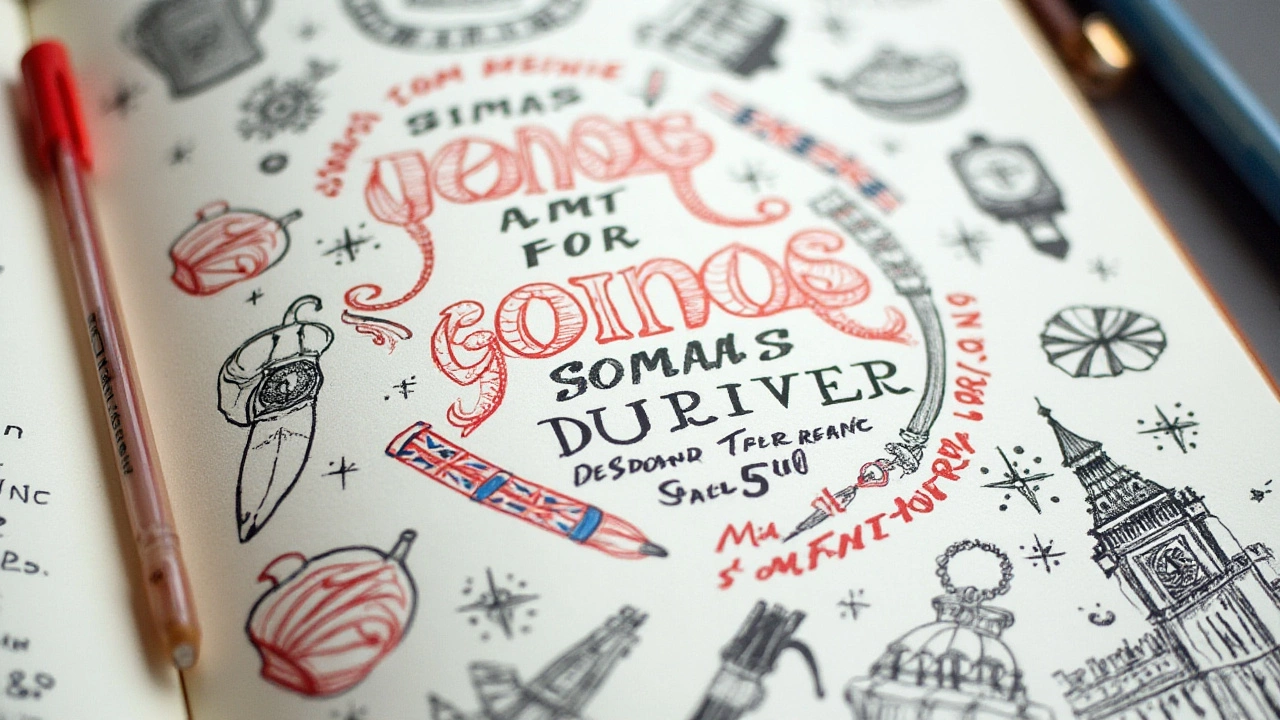The Meaning of $5 in Slang: Exploring Its Uses and Origins

Slang is a fascinating aspect of language that often breaks the rules but enriches communication with color and flair. When it comes to money, slang terms can be as varied as they are vivid, each carrying a story of its own. A $5 bill, for example, isn't just a piece of paper; it's known by a variety of names depending on where you are and who you're with.
Understanding these terms is not only amusing but also practical, offering insights into cultural nuances and societal trends. In this journey through informal language, we'll uncover the origins, meanings, and uses of $5 slang, along with tips to navigate these quirky expressions. Whether you're an aficionado of language or just curious about everyday vernacular, this exploration into money slang promises to be both enlightening and entertaining.
- Unpacking the $5 Slang Terminology
- The Cultural Roots of Money Slang
- Regional Variations and Usage
- Historical Tidbits of Currency Language
- Tips for Understanding and Using Money Slang
Unpacking the $5 Slang Terminology
Money has a secret language that changes as you move from one place to another. Dive into urban streets or small-town gatherings, and you might hear a $5 bill called by its more colloquial term: a fiver, a fin, or even half a ten-spot. Each name has a history, some going back decades or more, showing how culture and time shape the way we talk about cash. This slang isn't just random words; these terms often arise out of necessity, humor, or just the natural evolution of language among those who wish to communicate quickly and with personality.
Let’s start with the term “fin.” It’s a classic example of how slang can shrink language, making it handy and quick. The word “fin,” derived from the German word for five, “fünf,” has been with us since the early 20th century and evokes images of a time when immigrants brought their languages and added them to the American slang mix. This term can conjure thoughts of vintage speakeasies and the hustle and bustle of a city from a bygone era, where people spoke as hurriedly as they lived.
Meanwhile, calling a $5 bill a “fiver” is part of a broader British influence on American English that landed with a soft thud yet rooted deeply. This term began in British slang to denote the simple and straightforward use of the number, expanding across the Atlantic with its users, oftentimes lending an air of simple candor and practicality. But why does it stick? Possibly for its brevity or perhaps its quaintness, as compared to the flashier vocabulary adopted by younger crowds.
No exploration of slang is complete without the term “half a ten-spot.” This quirky name points to a more whimsical nature brought into slang by creatively breaking down the denominations. More than just another name, it’s a mathematical nod in disguise, highlighting how people often take pleasure in playing with numbers even in everyday vernacular.
Francis B. Randall, a noted linguist, said,
“Slang is more than just informal language; it’s a living entity that reflects the personality of a community or a group.”This quote beautifully captures why something as mundane as a denomination can have such richness in vernacular. This quote emphasizes the lively and dynamic nature of slang, suggesting that it's always listening and waiting to be changed by social behaviors and trends.
Slang related to money is usually about how people down the street, in the workplace, or even at family gatherings choose to refer to their lincoln portraits. It’s about fitting in and sometimes standing out, about knowing the right terms to say to make a smooth impression or perhaps to just bring a smile. Embracing these terms deepens one’s cultural literacy and ability to navigate through different social milieus with ease and charm, offering insight into the blend of language and social interaction.
The Cultural Roots of Money Slang
Money, in its many forms, has not only been a means of trade and wealth but also a rich source of linguistic expression across cultures. The slang surrounding money, including the term for a humble $5 bill, reflects societal values, historical contexts, and human creativity throughout the ages. From street corners to boardrooms, how people talk about money often reveals more than just the value of the currency itself; it speaks of shared experiences and cultural identity. For instance, in the United States, the term 'fiver' is commonly used, while in Canada, you might hear 'a five-spot.' These names are not just matters of linguistic preference but are steeped deeply in history and the cultural milieu they come from.
Much of this slang originates from vibrant communities where language evolves rapidly to accommodate changing times and diverse groups. In the African American Vernacular English (AAVE), for instance, creativity in language plays a significant role in cultural expression. The jazz age, marked by lively cultural exchanges and economic shifts, left a wealth of idioms concerning money, many of which persist today. These expressions became symbolic of the era's dynamic nature and have since been passed down generations, evolving to fit new contexts and realities. This fluidity ensures the language remains alive and relevant, showcasing the community's resilience and adaptability.
The Influence of Social Dynamics
The evolution of money slang is also intimately linked with social hierarchies and economic dynamics. As communities adapt to economic changes, so too does their language of commerce. The prevailing attitude towards money in each society influences how slang terms develop and spread. A study on social linguistics might reveal that in periods of economic hardship, the slang for money often becomes more prevalent, highlighting its ubiquitous presence and necessity. This is exemplified by terms from the Great Depression or recent recessions, where new slangs emerge, often with a hint of humor, to cope with challenging times. In Britain, the term "fiver" for a £5 note speaks to a blend of formal and informal influences in British society, reflecting class distinctions and the mingling of different cultural strands.
"Language is the road map of a culture. It tells you where its people come from and where they are going." — Rita Mae Brown
The role of migration in spreading and evolving money slang cannot be overstated. As people move and settle in new territories, they bring with them their language and cultural practices, which adapt to new environments. This blending creates a tapestry of expressions, each with a unique backstory connecting it to its place of origin. Thus, the language of money becomes a living repository of shared human experiences, telling stories of movement, adaptation, and cultural convergence.
| Term | Region |
|---|---|
| Fin | United States |
| Fiver | United Kingdom |
| Five-spot | Canada |
The culmination of these influences—historical, social, and migratory—points to a vital aspect of cultural transmission. The slang for $5 and other denominations showcases the interplay between language and life, a constant dance where each influences the other. As society progresses, so too does its language, ensuring that even something as mundane as a $5 bill is given a vivid linguistic life, full of history and cultural significance.

Regional Variations and Usage
Language carries the unique trait of adaptability. Across various regions, the slang for a $5 bill demonstrates this trait perfectly. These terms can reveal much about a region's culture, economy, and history. In the United States, for instance, you might hear the term 'fin' being used to refer to a $5 bill. This term is believed to stem from the German or Yiddish 'funf,' which means five. Such linguistic adoptions point to historical immigration patterns and cultural exchanges that have left an indelible mark on everyday language.
Moving north to Canada, a $5 bill is sometimes casually referred to as a 'fiver,' or even a 'Beaver,' highlighting the iconic beaver that graced the reverse of some of Canada's older notes. Such terms underscore the cultural pride Canadians have in their symbols and natural heritage. In the United Kingdom, the £5 note was often referred to as a 'fiver.’ Not only does this reflect a simple numerical reference, but it also shows how straightforward and descriptive British slang can often be. The use of 'fiver' is widespread and instantly understandable across different regions of the UK, indicating a surprisingly homogeneous adoption of this term.
Interestingly, in Australia, the presence of the famous author Banjo Paterson on the $5 note once suggested nicknames like 'Banjo' might stick, though such terms are not as commonly used today. The variations or lack thereof in slang terms for currency in these regions hint at differing cultural inclinations toward formality in language as well as the shared understanding of currency value.
"Language is the road map of a culture. It tells you where its people come from and where they are going." - Rita Mae Brown
Indeed, these variations are not merely linguistic curiosities but pathways to understanding deeper cultural narratives. Across cultures, from the hustle of New York City to the beaches of Sydney, the way money is spoken about reflects a shared human experience, yet also the vibrant diversity of expression. Exploring these expressions offers insights into both contemporary life and the nuanced, layered history of language development.
With these insights, those interested in the intricacies of language can appreciate how slang, particularly money slang like that for $5, functions as a living record of cultural identity and interaction. Engaging with such language enriches our appreciation for both the specific context and the broader global community where these terms circulate. So next time you hear a regional term for money, take a moment to ponder the story nestled behind those few syllables. This story holds the power to connect continents and generations in a vibrant tapestry of expression.
Historical Tidbits of Currency Language
The evolution of slang to describe money is a captivating journey through time, reflecting cultural, social, and economic transformations. The language surrounding currency is filled with stories that trace back to different eras and communities. For instance, the term 'buck,' commonly used to refer to a dollar, has roots stemming from the American frontier days when the skin of a male deer, or a 'buck,' was often traded for goods and services. This practice naturally led to the buck being synonymous with money.
In the 19th and early 20th centuries, as financial systems became more formalized, so did the diversity of money slang. During the Great Depression, people creatively adapted their vocabulary to suit the dire economic conditions. Songs and literature from that era are filled with colorful references, such as a 'sawbuck' for a $10 bill, derived from the Roman numeral X resembling a sawhorse. These adaptations often served as both a commentary on the times and a means to inject humor or levity into conversations about money.
The global influence on currency terminology can't be overlooked. The British 'quid' for the pound might originated from the Latin phrase 'quiddity,' meaning 'essence,' which traders in bustling markets used to refer to transactions. Meanwhile, the Australian colloquialism of 'fiver' plays a straightforward role, referring directly to a $5 note. Each term, regional or widespread, carries with it a story, knitting together threads of linguistic heritage from across the globe.
"The language of money is not about cash alone; it's about notions of value and how they shift within cultures," says linguist Deborah Tannen.
Recordkeeping, or lack thereof, historically, can also add layers to currency language. For example, Native American communities and early settlers economies were heavily reliant on barter systems. These barter systems are responsible for certain enduring terms like the use of 'clam' for a coin, as some societies utilized clamshells or other natural materials as a trade equivalent. As money evolved, the language around it grew, leaving us with pieces of the past embedded in our verbal exchanges.
Visual and cultural media have further stamped their mark on money slang. Countless movies and songs across decades have embedded terms deeply into popular culture, with gangsters from vintage films popularizing phrases that are still in use today. This influence underscores how important media is in perpetuating and evolving the lexicon of currency.

Tips for Understanding and Using Money Slang
Understanding money slang can be like decoding an intricate puzzle of human culture and expression. It is not just about knowing what a term means but grasping the context in which it is used. Slang terms for money, like the beloved term for a $5 bill, bring color to our communication and add a personal touch to the often impersonal world of finance. These terms can vary widely based on geographic location, social circles, and even job sectors, each adding their own flavor to the vocabulary surrounding currency. When speaking with someone using money slang, take note of the setting and the relationship dynamics at play. A term that might be playful in one environment could be perceived differently in more formal contexts. Doing a bit of research into the history of these terms can also shed light on their quirky origins and might even surprise you with unexpected facts.
One way to become familiar with slang is through exposure and practice, much like learning a new language. Listening closely to conversations or reading materials where these terms are used can be immensely helpful. Try to immerse yourself in environments or media where money slang is commonplace. This could range from watching movies or series set in regions where these terms are popular, to reading novels or stories that incorporate them into dialogues. When you've gathered a bit of knowledge, practice using these terms with friends or peers, perhaps even in a fun game setting. Just be mindful of whom you're speaking with and ensure your use of slang matches the formality of the conversation.
One of the best ways to understand slang is to pay attention to how it evolves as well. Slang is highly adaptable and often reflects the sign of the times, often influenced by pop culture, technology, and societal shifts. Keeping an eye on current cultural trends can give you a heads-up about the latest slang words, especially those related to money. For example, certain TV shows, musicians, or social media platforms might popularize new terms. Also, talking to multiple generations can offer a broader perspective, as older generations might have different slang terms that still hold validity within certain groups. Being curious and open to learning from various sources can deepen your understanding significantly.
"Understanding slang requires a grasp of not just the language, but the rich social tapestry that gives it life," remarks noted linguist Deborah Tannen.
Lastly, an approach that often works well is to build a personal glossary of sorts, noting down new terms as you encounter them along with their meanings and any interesting facts or cultural notes. This method can enhance your memory and understanding of these colorful expressions. Think of this collection as a living document that evolves with your continued exposure and learning. If you work in environments where money slang is prevalent, such as in certain business communities or cultural hubs, having such a glossary handy can even serve as a quick reference guide during conversations. Not only will this bring confidence in understanding and using them, but it will also aid in keeping your language fresh and relatable to those around you.





